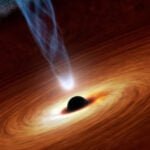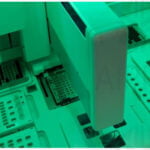
In recent years, the world of photography has been forever changed with the advent of drone cameras. These remarkable devices allow photographers and videographers to capture breathtaking aerial shots that were once unimaginable. The drone camera market has seen a significant surge in popularity, with a wide range of models and features available. In this comprehensive guide, we will dive into the world of drone cameras, exploring their technology, applications, and best practices for an unparalleled flying experience.
A drone camera is an unmanned aerial vehicle (UAV) equipped with a high-definition camera. These devices are controlled remotely and can capture stunning images and videos from various heights and angles. Drone cameras are equipped with cutting-edge technology, including GPS navigation, obstacle avoidance systems, and stabilizing gimbals, ensuring smooth and professional-grade footage.
The origins of drone cameras can be traced back to their military applications, where they were used for surveillance and reconnaissance. However, advancements in technology led to the development of consumer-friendly models, bringing the captivating world of aerial photography to enthusiasts and professionals alike.
Drone cameras operate using a combination of intricate hardware and software components. These include GPS modules, flight controllers, brush less motors, and sophisticated cameras. The flight controller acts as the brain of the drone, processing data from various sensors to stabilize and navigate the device.
Drone cameras come in various shapes and sizes, each catering to specific needs and budgets. Here are some popular types of drone cameras:
Drone cameras have found applications in various industries, transforming the way businesses operate and revolutionizing content creation. Some prominent applications include:
As technology continues to advance, new and improved drone camera models hit the market. Here are some of the top models gaining popularity:
| Model | Key Features |
|---|---|
| DJI Phantom 5 | 4K UHD Camera, Intelligent Flight Modes, Extended Range |
| Autel Evo II | 8K Camera, 40-Minute Flight Time, Obstacle Avoidance |
| Skydio 2 | 4K60 HDR Camera, AI-powered Flight, Collision Avoidance |
| Parrot Anafi USA | Thermal Imaging Camera, Foldable Design, Weatherproof |
| Yuneec Typhoon H Plus | 1-Inch CMOS Sensor, Six-Rotor Design, Retractable Gear |
Flying a drone camera requires responsibility and adherence to safety guidelines. Follow these tips for a safe and enjoyable flying experience:
A: The range of a drone camera depends on its model. Consumer drones typically have a range of up to 1-2 kilometers, while professional models can reach distances of several kilometers.
A: It is not recommended to fly a drone camera at night. At night it can be challenging to maintain visual contact with the device which can increasing the risk of accidents.
A: The licensing requirements vary by country and region. In some places, you may need to obtain a drone pilot license, especially if using the drone for commercial purposes.
A: Drone cameras equipped with obstacle avoidance sensors use infrared sensors and cameras to detect obstacles in their flight path. The drone can then adjust its trajectory to avoid collisions.
A: Flying drones in national parks is subject to specific regulations. Some parks allow drone use with restrictions, while others prohibit it altogether. Always check the rules before flying.
A: Drone camera regulations vary globally. While they are legal in many places, certain countries and regions have strict restrictions or outright bans on drone use. Research local laws before flying.
Drone cameras have opened up a world of possibilities for photographers, videographers, and professionals in various industries. These versatile devices offer a unique perspective on the world, capturing stunning visuals from the skies above. As technology continues to advance, the potential for drone cameras to shape the future of photography and cinematography is limitless. Embrace the drone camera revolution, and unlock a new dimension of creativity in your visual storytelling.
Recommended other topics: How Does Light Travel-Exploring the Wonders of Photons










© InfoDoot. All Rights Reserved.